Epoxy flooring has become a popular choice for homeowners seeking a durable and stylish flooring solution. Known for its resilience and aesthetic appeal, it stands out among various flooring options.
This article explores what epoxy flooring is, how it differs from other types, its benefits and drawbacks, and whether it’s suitable for residential spaces.
It also discusses installation processes, costs, different types of epoxy flooring, and maintenance tips to help you make an informed decision.

What Is Epoxy Flooring?
Epoxy flooring is a durable and attractive flooring option that consists of a mixture of resins and hardeners, creating a robust surface that is highly resistant to moisture and chemicals. This type of flooring is often used in various environments including residential homes, garages, and commercial spaces due to its long-lasting qualities and low-maintenance requirements. Epoxy flooring can be customized in terms of colors, textures, and designs, making it appealing to homeowners looking for a unique interior aesthetic.
Take a look: How To Apply Epoxy Flooring In Garage
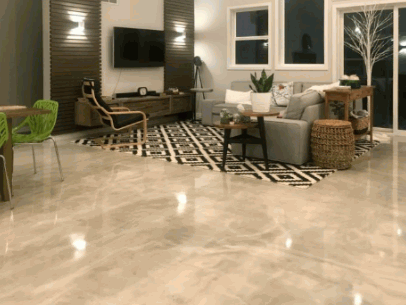
How Is Epoxy Flooring Different From Other Flooring Options?
Epoxy flooring stands out from other flooring options like hardwood, tiles, and carpet due to its unique properties that offer high durability and low maintenance, making it suitable for areas with high traffic such as garages and commercial spaces. Unlike traditional flooring materials, epoxy provides a seamless surface that is resistant to staining, spills, and moisture, while also being customizable in terms of colors and textures.
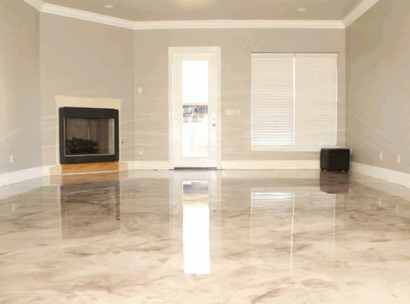
What Are The Benefits Of Epoxy Flooring?
The benefits of epoxy flooring are numerous, making it an appealing choice for both residential and commercial spaces. Key advantages include its exceptional durability and strength, resistance to spills and stains, ease of cleaning, and low maintenance requirements, which are particularly valuable in high-traffic areas such as garages and basements.
In particular, the durability of epoxy flooring shines in environments prone to heavy use, such as workshops or retail spaces, where foot traffic can lead to quick deterioration of lesser floor types. Imagine a bustling garage where oil and water spills are common; here, epoxy’s resistance helps maintain its aesthetic and functional qualities, unlike traditional flooring that may discolor or warp under such conditions.
Maintenance is significantly simplified with epoxy surfaces. A simple mop and mild detergent can easily take care of dirt and grime, saving valuable time and resources. In contrast, other flooring materials might require intensive scrubbing or harsher chemicals that can ultimately damage their integrity over time.
- Quick installation times can also be a crucial factor; epoxy flooring can typically be installed within a day, minimizing disruption to daily operations.
- Its seamless nature means no crevices for dirt to accumulate, ensuring that cleanliness is maintained effortlessly.
This combination of factors makes it evident why many property owners are opting for epoxy flooring as their preferred choice.

What Are The Drawbacks Of Epoxy Flooring?
While epoxy flooring offers many advantages, there are also drawbacks to consider before installation. Some notable cons include its potential slipperiness when wet, the high upfront cost compared to traditional flooring options, and the need for professional installation to ensure a seamless and durable finish.
These factors can significantly influence homeowners’ decisions, as safety should always be a top priority.
The slipperiness issue may lead to accidents, particularly in homes with children or elderly residents, making this a crucial consideration.
The initial investment may deter some, especially when cheaper flooring alternatives are available. Many individuals may find the idea of hiring contractors daunting, as this typically involves coordination, scheduling, and additional financial costs for professional installation.
As a result, weighing these drawbacks against the aesthetic appeal and durability of epoxy is essential for a well-informed choice.

Is Epoxy Flooring Suitable For Homes?
Epoxy flooring is increasingly becoming a popular choice for homeowners due to its numerous benefits and versatility. Suitable for various spaces within the home, such as garages and basements, epoxy provides a durable and attractive surface that can withstand heavy traffic while providing design flexibility with numerous customizable options in texture and color.
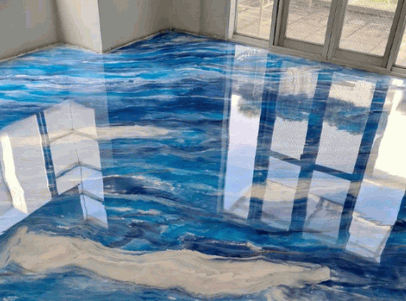
What Are The Factors To Consider Before Installing Epoxy Flooring In A Home?
Before installing epoxy flooring in a home, several factors should be considered to ensure that it meets the homeowner’s needs and expectations.
These include assessing the specific environment in which the flooring will be installed, as well as the desired aesthetic, cleaning requirements, and possible moisture exposure. Potential homeowners should focus on durability and whether the flooring will endure heavy foot traffic or follow a more decorative approach in low-traffic areas. Other key considerations involve:
- Environmental conditions: Evaluate temperature, humidity, and the potential for spills, particularly in spaces like kitchens or garages.
- Intended use: Determine if the area is meant for relaxation, entertainment, or high-impact activities.
- Design preferences: Consider color schemes and textures that will complement existing decor.
- Installation and maintenance: Understand the preparation needed for installation, as well as ongoing upkeep requirements to maintain the flooring’s aesthetics and durability.
Taking these aspects into account will ultimately lead to a more satisfying choice in epoxy flooring, ensuring it aligns with the owner’s vision and practical needs.

What Are The Different Types Of Epoxy Flooring?
There are several different types of epoxy flooring, each designed to suit various applications and aesthetic preferences. Among the most commonly used types are self-leveling epoxy, mortar epoxy, gravelled epoxy, and terrazzo epoxy, each offering unique features and benefits that cater to different environments and design styles.
Self-leveling Epoxy Flooring
Self-leveling epoxy flooring is a popular choice for residential and commercial spaces due to its ability to create a smooth, seamless surface that can easily cover imperfections in the existing floor. This type of flooring is known for its durability and aesthetic appeal, making it suitable for high-traffic areas.
When considering the installation process, it’s important to note that self-leveling epoxy flooring typically requires a clean, primed surface to ensure proper adhesion. The mixture is poured onto the floor and spreads out evenly, creating a flawless finish without the need for labor-intensive techniques.
One of the prime advantages of this flooring type is its exceptional durability, which can withstand heavy loads and resist chemicals, making it ideal for warehouses and commercial kitchens.
- Benefits:
- Long-lasting performance with reduced maintenance needs
- Variety of colors and designs for aesthetic customization
- Seamless surface decreases dirt buildup
Its elegant appearance makes it a suitable choice in showrooms and retail environments, where the first impression often matters the most.

Mortar Epoxy Flooring
Mortar epoxy flooring is recognized for its exceptional strength and durability, making it an ideal choice for commercial settings where heavy equipment and high traffic are common.
This type of epoxy flooring combines epoxy resins with sand and aggregates, resulting in a thicker and more robust surface.
Characterized by its enhanced resilience, mortar epoxy flooring delivers a dependable solution that withstands rigorous demands in various industrial environments. The unique composition ensures not only a strong surface but also excellent resistance to chemicals, impacts, and abrasions—qualities essential for demanding applications.
In terms of installation, careful surface preparation is crucial. This includes:
- Cleaning and repairing any existing flooring
- Applying a suitable primer to enhance adhesion
- Mixing the epoxy with aggregates properly
- Pouring and leveling the mixture efficiently
Once cured, this flooring type proves to be an excellent option for areas such as warehouses, manufacturing plants, and automotive facilities, where both safety and longevity are paramount.

Gravelled Epoxy Flooring
Gravelled epoxy flooring offers a unique textured surface that can add both aesthetic appeal and functionality to residential and commercial spaces.
This type of flooring incorporates small stones into the epoxy mix, resulting in a decorative finish that is also slip-resistant and durable. Its versatility makes it an excellent choice for various environments, including garages, walkways, and even indoor areas like kitchens and basements.
Homeowners and business owners alike appreciate the wide range of color options and patterns available, allowing them to customize their flooring to match existing decor. The textured surface enhances safety by providing better traction, making it a practical solution for spaces that may be prone to spills or moisture.
- Slip-resistant properties for enhanced safety
- Durability that withstands heavy foot traffic
- Aesthetic customization options
- Suitable for both indoor and outdoor applications

Terrazzo Epoxy Flooring
Terrazzo epoxy flooring is a stunning option that combines resin with marble or glass chips, creating a highly decorative and durable surface. This type of flooring is often chosen for its aesthetic appeal and versatility, making it suitable for residential interiors as well as commercial spaces.
With an array of design options available, terrazzo epoxy flooring offers homeowners and businesses the chance to express their unique style. From vibrant color blends to intricate patterns, the customization possibilities are nearly endless. The installation process is relatively straightforward, involving pouring the epoxy mix and allowing it to cure, which results in a seamless surface that is both visually striking and easy to maintain.
- Durability: This flooring withstands heavy foot traffic.
- Maintenance: Simple cleaning methods keep it looking fresh.
- Eco-Friendliness: Many options incorporate recycled materials.
For those contemplating a flooring upgrade, exploring terrazzo epoxy can lead to a truly unique and practical solution that meets both aesthetic and functional demands.
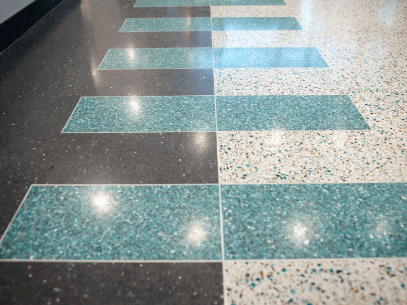
How Is Epoxy Flooring Installed In Homes?
Installing epoxy flooring in homes involves a systematic process that begins with preparing the surface to ensure proper adhesion and long-lasting results. This process includes cleaning the area, repairing any damage, and applying a primer before the actual epoxy mixture is poured and cured.

What Is The Process Of Preparing The Surface For Epoxy Flooring?
The process of preparing the surface for epoxy flooring is critical to ensure a successful installation and long-lasting durability. This preparation includes thoroughly cleaning the area to remove dust, grease, and other contaminants, as well as repairing any cracks or imperfections in the existing floor.
Before applying the epoxy, one must follow specific steps to create an ideal foundation. First, cleaning methods should include sweeping, vacuuming, and mopping to eliminate all debris. After that, a degreasing solution may be used to tackle any stubborn stains.
Next, inspect the surface for cracks or imperfections; these should be filled with a suitable epoxy filler and sanded down once cured. This repair technique prevents moisture intrusion and enhances bond strength. Performing a moisture test on the concrete ensures it is dry enough for the epoxy application.
- Cleaning: Sweep, vacuum, and mop the surface.
- Degreasing: Use a degreaser for tough stains.
- Repairing: Fill and smooth out cracks.
- Moisture Testing: Confirm concrete dryness.
Each of these steps plays a vital role in achieving optimal adhesion and durability in the finished flooring system.
What Is The Process Of Applying Epoxy Flooring?
The process of applying epoxy flooring involves mixing the epoxy resin and hardener, followed by pouring and spreading it evenly over the prepared surface. It is essential to work efficiently and quickly, as epoxy can start to cure and harden in a relatively short time, making professional installation highly recommended.
To achieve the best results, a typical mixing ratio of epoxy resin to hardener is often around 2:1, though this can vary based on the specific product used. Once combined, it is crucial to mix thoroughly to ensure a smooth consistency, free of bubbles and impurities. Applying with a roller or squeegee allows for an even distribution across the area.
- The initial layer should be spread uniformly, with careful attention paid to corners and edges.
- After spreading, the first coat should be allowed to cure, which typically takes between 12 to 24 hours, depending on the temperature and humidity levels.
- For optimal durability, a second coat is recommended after the first has fully cured.
Engaging professionals for installation not only saves time but ensures that the mixing, application, and curing processes are carried out flawlessly, delivering a stunning finish and lasting results.
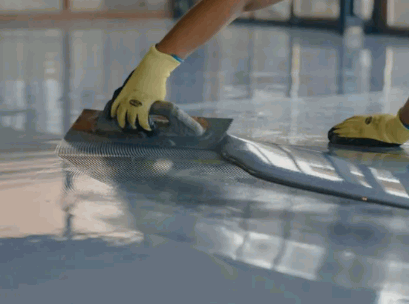
What Is The Cost Of Installing Epoxy Flooring In A Home?
The cost of installing epoxy flooring in a home can vary significantly based on several factors, including the type of epoxy chosen, the size of the area being covered, and whether professional installation is required. Generally, homeowners can expect to invest more upfront compared to traditional flooring options, but the long-term benefits often justify the initial cost.
The investment in epoxy flooring represents a balance between initial expenditure and future savings. Some of the essential components that contribute to the overall cost include:
- Materials: The type of epoxy, whether it’s a basic one or a more decorative option, plays a significant role in determining the cost.
- Labor: Hiring experienced professionals can increase costs, but their expertise ensures a flawless finish and longevity.
- Additional Features: Elements such as anti-slip finishes, custom colors, and surface preparation can also influence the final price.
Ultimately, although there might be a higher upfront cost, investing in epoxy flooring can lead to substantial savings in terms of durability and lower maintenance over time.
How To Maintain Epoxy Flooring In A Home?
Maintaining epoxy flooring in a home is relatively simple, making it an attractive option for busy homeowners. Regular cleaning with appropriate products, avoiding harsh chemicals, and addressing any spills or stains promptly will help preserve the appearance and durability of the epoxy surface.
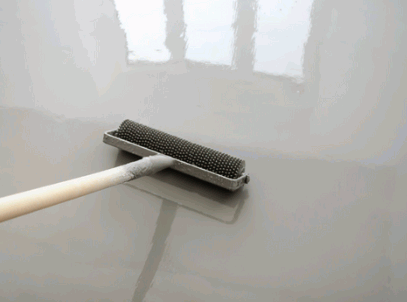
What Are The Dos And Dont’s Of Maintaining Epoxy Flooring?
In terms of maintaining epoxy flooring, homeowners should be aware of the key dos and don’ts to ensure the flooring remains in top condition. Among the dos are regular cleaning using gentle products and promptly addressing spills, while the don’ts include using abrasive cleaners or neglecting maintenance.
To keep epoxy floors looking their best, it’s crucial for homeowners to adopt effective cleaning habits and make informed choices about their upkeep. Here are some specific tips:
- Do: Use a soft mop or microfiber cloth to regularly wipe down the floor. This helps prevent dirt accumulation and ensures a clean surface.
- Don’t: Allow standing water to sit on the floor for prolonged periods, as it can seep into cracks and damage the finish.
- Do: Utilize a pH-balanced cleaner designed for epoxy surfaces. This maintains the flooring’s integrity without causing wear.
- Don’t: Overuse wax or polish; excessive applications can create a slippery surface that poses safety risks.
By following these straightforward guidelines, homeowners can preserve the beauty and functionality of their epoxy flooring, ensuring it serves them well for years to come.
What Are The Recommended Cleaning Products For Epoxy Flooring?
Choosing the right cleaning products is essential for maintaining the appearance and longevity of epoxy flooring.
To keep these surfaces looking pristine, it’s important to select cleaners that effectively remove grime without harming the unique protective layer that epoxy flooring provides. This includes not only using pH-neutral cleaners specifically designed for epoxy surfaces but also incorporating gentle cleaning tools that won’t damage the finish.
Below are some recommended products that many find effective:
- Simple Green All-Purpose Cleaner: This versatile cleaner is safe for epoxy and can tackle tough stains without harsh chemicals.
- Zep Neutral pH Floor Cleaner: A favorite among professionals, this option is specially formulated for hard surface flooring, including epoxy.
- Ecolab’s FloorCleaner: Eco-friendly and effective, it’s designed for daily use without compromising safety.
When using these products, remember to dilute them according to the instructions on the label, and always use a soft mop or cloth to prevent scratching. Regularly maintaining your epoxy flooring will ensure its durability and aesthetic appeal over time.


